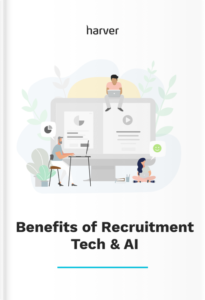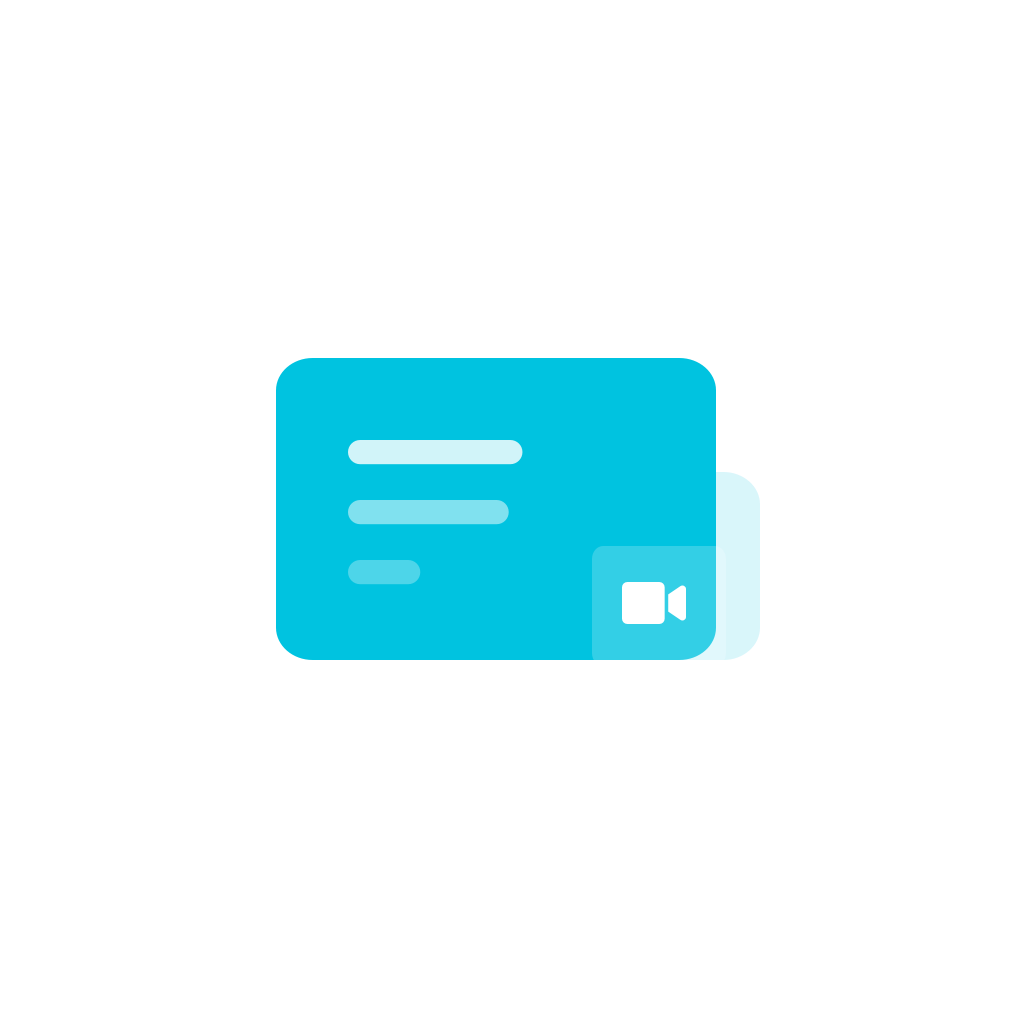Video or virtual interviewing is becoming increasingly popular in recruitment. More and more companies are embracing technology to modernize their interview process, recognizing that they can reduce their time to hire by up to 50% if they make use of video interviewing when hiring.
Many companies are already doing so. In fact, an OfficeTeam survey revealed that 63% use (or have used) video interviewing in their hiring process recently. And while the benefits are clear, there are still a number of myths surrounding video interviewing that can make even the most tech-savvy companies shy away.
So let’s take a look at what video interviewing in recruitment actually is, what the benefits and limitations are, best practices for getting it right, and the most effective software to help you do just that.
What’s in?
What is video interviewing in recruitment?
A video interview is a job interview conducted online that offers recruiters a way to select candidates more efficiently and effectively. This type of interviewing can ease the candidate selection process and supplement assessment data to provide a well-rounded profile of an applicant. And while it’s not meant to replace face-to-face interviews, it can be a good tool to use when office visits are not possible.
There are two types of video interviewing that can be used in the recruitment process: one-way and two-way interviews.
One-way video interviews
Asynchronous, one-way interviews are perfect for replacing inefficient phone screenings. Questions can either be presented in a text or video format, allowing candidates to record their answers at their convenience to submit for the recruiter or hiring manager’s review. These one-way calls are also sometimes referred to as on-demand video interviews. These aim to help a recruiter get a more accurate picture of a candidate right in the initial stages of the hiring process.
Two-way video interviews
Two-way virtual interviewing allows both candidates and interviewers to live-stream from wherever they are and talk to each other in real-time. Two-way interviews are highly effective for overcoming distance and situations when physical interviews might not be possible, such as the COVID-19 outbreak currently sweeping the globe. Because of the outbreak, at the moment many of the world’s leading organizations like Google, Linkedin, and Amazon have canceled on-site job interviews and are interviewing all candidates virtually for the time being.
Make no mistake – video interviewing in recruitment doesn’t mean interviewing your candidates via Skype or Zoom. Both one-way and two-way interviewing are typically carried out via dedicated video interview software with functionalities built-in to streamline the recruitment process. For example, interview scheduling capabilities, a whiteboard for collaborating, integration with your Applicant Tracking System (ATS), interview recording and embedded evaluation forms are all features that help drive efficiencies for recruiters.

The number of companies using video interviews for recruitment spiked by
67%
in the past weeks.
Source: Walters People
Employers are turning to video interviews when on-site interviews are impossible due to the COVID-19 pandemic.
Advantages and limitations to virtual interviewing
Like anything else, there are pros and cons of conducting virtual interviews. We’ll break them down for you.
Video interviewing advantages
- Shorter time to hire: Video interviewing can cut your time to hire in half by creating efficiencies in your recruitment process, for example, easier interview scheduling and scrapping phone screenings.
- Gathering qualitative data: One-way virtual interviews add a qualitative element to your pre-selection process to supplement quantitative data from other assessments.
- Reduces the risk of bias: Developing a consistent, standardized video interview process helps reduce the risk of unconscious hiring biases.
- Ability to record and save videos: Video interviews can be recorded for other team members to review, future reference, and audits.
- Eliminates scheduling: Asynchronous video interviews are recorded at a candidate’s convenience, meaning there is no need to deal with scheduling.
- Decrease hiring costs: Video interviewing can reduce hiring costs dramatically, as it helps save efforts that would otherwise be spent on manual screening. According to RecRight, companies are 2.7 times more likely to improve their cost per hire using video interviews.
Video interviewing limitations
- Requires an internet connection: Virtual interviewing usually requires a stable Internet connection, which might be problematic in some locations.
- Lacking the right tools: All candidates might not have access to the devices needed to interview virtually. (In these cases, be prepared to offer alternatives.)
- Technology skills gap: While video interview tools are typically pretty user-friendly, there’s always the chance that a candidate won’t be tech-savvy enough to engage in a virtual interview.
Like what you see?
Don’t miss out. Subscribe to our quarterly digest to get the latest TA and TM resources delivered right to your inbox.
Best practices for video interviewing
Follow these best practices to work effective, efficient video interviewing into your current recruiting process:
1. Be transparent with candidates
When conducting video interviews, it’s important to be as transparent with your candidates as possible. While video interviewing is certainly becoming more common, it’s still not the norm everywhere—meaning some of your candidates may not be familiar (or comfortable) with the format initially.
Start the interview off by explaining the process, telling them how you’re using the videos and why, sharing where the recorded videos will be stored, addressing potential privacy issues and answering any questions they have.
How AI & recruitment technology is changing recruiting experience
Find out how tech has helped other companies grow by enhancing both the recruiters’ and candidates’ experience!
2. Put the candidate experience first
Remember to always put the candidate experience first, including when conducting video interviews. Introduce your brand, allow applicants to re-record their interview if possible, and find ways to make the video interview engaging.
You can make the interview more interactive by asking candidates to share something related to their work and the role they’re applying for. For example, you might ask a teacher to share a sample lesson plan or a developer to demo a new mobile app.

2/3
of video interviews are completed outside of work hours.
Source: ResourceBank
The flexibility of asychronous video interviews is a clear advantage for candidates, who can complete the the interviews at their own convenience. This contributes to a positive candidate experience.
3. Use different formats for different purposes
Because there are both one-way and two-way interview formats, it’s important to determine how you’ll use each of them to improve your hiring process. Using different formats for different purposes is the ideal approach when adopting video interviewing. Asynchronous interviews are an excellent alternative to phone screenings, whereas live video interviews are perfect for initial interview rounds. They are also very useful when coming to the office is simply not possible.
4. Structure your video interviews well
You should structure your video interviews in a way that’s consistent and effective. Keep asynchronous interviews short and sweet, as they’re meant to replace phone screenings rather than face-to-face interviews. Ask the right questions and collect feedback after-the-fact to improve your process.
Make it a point to remain consistent in your live interviews too. You can do so by having a standard list of questions, a “script” (remember to change it up slightly to personalize the experience for each candidate) introducing your organization and the role in question. This will not only streamline the selection stage but also reduce the likelihood of hiring biases.
5. Check for integration with your ATS
Most organizations use an ATS to store and save information on each candidate. Choosing a video interview tool that integrates with your ATS will allow you to save each video interview on the candidate’s profile, where it can be reviewed (and re-reviewed) by other members of your team. Doing this will help you eliminate the step of saving and uploading interview videos to the system you’re using to track your applicants.
Keep in mind that some ATSs have a built-in video interviewing module. If yours does, make sure it includes the features that you need to streamline the pre-selection process, like embedded evaluation forms and recording capabilities.
Note: If you’d like to see what Harver’s video interview module looks like in practice, you can check the module here, or book a demo below.
Ready to transform your hiring process?
6. Have interview scorecards ready
Interview scorecards are a great way to help your team thoroughly vet candidates and make better hiring decisions. They’re essentially used to standardize the way you evaluate candidates during the interview stage, improving the quality of feedback and reducing overall time to hire.
How is this done? Each interviewer creates a scorecard for each applicant being interviewed and uses it to score interviewees based on the same criteria. Here’s a great overview of how to design an interview scorecard to rate your candidates.
7. Choose the right video interview software
Last but certainly not least, choose the right virtual interview software to meet your recruiting needs. Do you want to reduce the time spent on phone screening and implement one-way virtual interviews? Or do you want to conduct live video interviews? Or both? Listing down your requirements will help you focus on the desired functionalities when researching options.
Don’t forget to make sure the video interview tool you choose can accommodate a company of your size and can integrate with your current ATS.
Also, it’s important to be wary of video interviewing software that uses artificial intelligence (AI) to analyze interviews. For example, some video interview tools are designed to make automated decisions based on facial/or micro-expression analysis. Beside ethical concerns, this can even have legal implications in certain states.

Phone interviews add up to
8.2 days
to the hiring process.
Source: Glassdoor
If you want to cut your phone screening time, look for a video interviewing solution allowing one-way interviews.
What’s the best video interview software?
Even if you’re following best practices, it’s essential to find the right video interview software for your organization. The video interview tool that you choose should fit your needs and offer features that will enhance and improve your recruitment process. Here are some of the top video interview tools on the market, with details on what makes them great:
Harver
Harver is a full-suite candidate selection platform with a video interview module that allows you to implement asynchronous virtual interviewing in your candidate pre-selection process with ease. Recorded video interviews can be mixed with other Harver assessments, which let you test everything from cognitive abilities to culture fit.
The video interview module allows you to upload your own videos or written questions to see how candidates reply via recorded video responses. You can gain a truly holistic view of each applicant by combining Harver assessment data with qualitative results from video interviews.
You can see the module’s features below.
Harver is currently offering its virtual interviewing functionality free of charge to support businesses during the COVID-19 outbreak. Find out the details here.
VidCruiter
VidCruiter is a video recruiting platform with pre-recorded and live video interviewing capabilities. Pre-recorded, one-way interviewing is designed to help recruiters with the screening stage of the recruiting process. It allows you to narrow down the candidate pool without the need for conducting inefficient phone interviews.
Live video interviews are a chance for recruiters to meet finalist candidates face-to-face. This can either be used to supplement or replace regular in-person interviews, depending on the scenario at hand. The software also has interview scheduling capabilities to help you find the right time faster.
RecRight
RecRight is an applicant tracking system and video recruitment platform. The two functionalities are seamlessly integrated to make the screening and hiring process easier for recruiters. ATS integration makes it easy for team members to collaborate on candidate selection, as you can save video interview responses to each person’s personal profile and track their progress throughout the entire recruitment funnel.
InterviewStream
InterviewStream is recruiting software that makes it easier for recruiters and hiring managers to ask the right questions, screen candidates faster, and ease scheduling headaches. This video interview tool lets you create a structured, consistent interview guide for each open role. Pre-set questions broken down by industry make it easy to ask all the right questions and gather the correct information needed to make your decision.
Using InterviewSteam, you can have both one-way and two-way video interviews. And with the interview scheduler module, you’ll never have to worry about manual, time-consuming schedule tasks again.
InterviewStream offers free access to parts of their solutions during the COVID-19 situation.
MyInterview
MyInterview is a video screening tool designed to integrate seamlessly into any hiring process. With ATS integration, one-way and two-way interview capabilities and the video introduction feature, it’s easy to see why MyInterview is a top choice for recruiters.
This video interview software lets you shortlist, comment and rate submissions and collaborate with other decision-makers on your team. You can also easily share recorded interviews with stakeholders to incite feedback when making your decision.
In closing
Video interviewing is a great way to learn more about your candidates in a digital environment. Decide what type of video interview is most suitable for you based on your needs.
If you pick the right software and follow these best practices, you can be sure that you and your candidates alike will be happy with the experience.
How AI & recruitment technology is changing recruiting experience
Find out how tech has helped other companies grow by enhancing both the recruiters’ and candidates’ experience!




